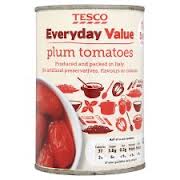Everywhere around us we see packaging. Everything comes in a container of some sort and somewhere, there is a team of people working away to make their product stand out and be chosen by the consumer. Packaging has been defined as “the various elements chosen and blended into a holistic design to achieve a particular sensory effect” (Orth & Malkewitx, 2008)
Decisions that we make about non-durable products are often made in the supermarket which suggests that packaging is having a massive impact on what we buy (Prone, 1993). I know for me this is true since I usually buy something either because it looks pretty or because it is cheap…
Packaging acts as a communication decide between the business and the consumer and should convey a single message which is clear and closed to misinterpretation in order to be successful (Underwood, 2003). I presume that this is because it helps to ensure that brand image is consistent and prevents it from being misinterpreted in a negative way which could have a negative impact upon the brand.
It has been suggested there are four universal norms which contribute to effective communication (Habermas, 1984) and since packaging is a form of communication, then these norms can be applied to the creation of good packaging.
1) Packaging should be truthful. If packaging lies or exaggerates the truth then this may lead to consumers developing a negative attitude towards the product which may lead to negative appraisal of the brand which could damage sales.
2) Packaging should be sincere. Packaging should not make products look bigger than they actually are. For example a trick some companies are pulling these days is modifying the product slightly so that we don’t notice a change, since if we did, we would not be happy. It’s like when you buy a bag of crisps and it’s all air. Ben and Jerry’s ice cream however fills the tub right to the top which makes me trust the brand more (as well as making me exceedingly happy).
3) Packaging should be comprehensible. Packaging should be easy to understand and not full of language that the average consumer understands. This could lead to frustration if the consumer buys the product expecting something and the product is something completely different and again could cause negative evaluation.
4) Packaging should be legitimate. That is it should make sense for the consumer. For example manufacturers create different sizes of products to suit people with different needs, e.g Heinz have created “fridge packs” of beans and spaghetti which allows consumers to buy in bulk whilst being able to keep store the product easily. This makes consumer’s feel valued by the company’s and will cause them to give a more positive evaluation which should make people like the product more.
Using the four principles, the value tomatoes are probably more effective as a communicator since all of the information on the tin is clear and visible on the front. It is easier to comprehend all of the information on the value tin since the more premium one is clearly more about the aesthetics since there is little information visible. This should make consumers more likely to choose the cheaper tin (if communication was all that we considered when making a purchase).
But of course consumers consider many things when making a purchase and so consumers may be less likely to choose the value tomatoes because they say that they are value which may suggest impaired quality….
What are your thoughts? Value or Premium Tomatoes?? Do you think the packaging communicates anything else?
References
Habermas, J. (1984) The Theory of Communicative Action, Vol. 1. Boston: Beacon Press.
Prone, M. (1993) Package design has stronger ROI potential than many believe. Marketing News October 27, 13.
Underwood, Robert L. (2003), “The Communicative Power of Product Packaging: Creating Brand Identity via Lived and Mediated Experience,” Journal of Marketing Theory and Practice, 9 (Winter), 62–76.



